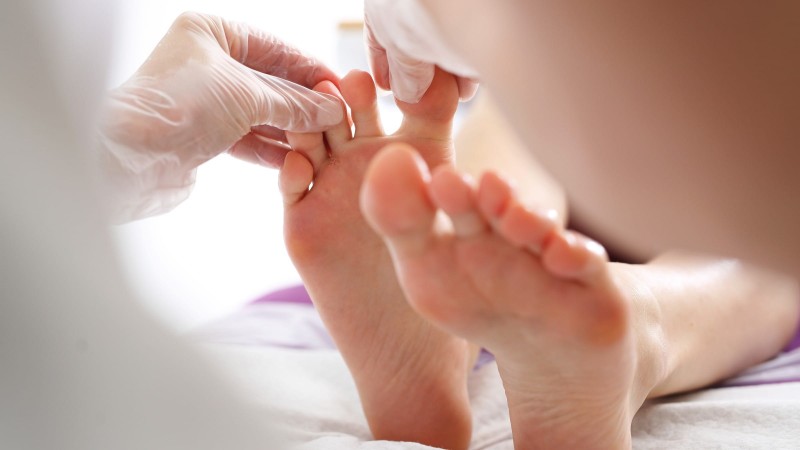
Diabetes, a chronic condition affecting millions worldwide, manifests through various symptoms, some of which are particularly evident in the feet. Identifying these signs early on is crucial for timely intervention and effective management. If you notice any of these symptoms, it's imperative to prioritize your health by getting a sugar test done promptly.
Diabetes, characterized by high blood sugar levels, poses significant health risks if left uncontrolled. It can lead to complications affecting multiple organs and systems in the body, including the feet. Proper management of diabetes is essential to prevent these complications and maintain overall well-being.
Feet play a vital role in diabetes management as they are often the first to exhibit signs of potential complications. Nerve damage (neuropathy) and poor circulation (peripheral arterial disease) commonly affect individuals with diabetes, making their feet particularly vulnerable to injury and infection.
Due to nerve damage and reduced blood flow, individuals with diabetes may experience diminished sensation and slower healing in their feet. This makes them more susceptible to injuries, infections, and other foot-related issues.
Recognizing the signs of diabetes in your feet can help you take proactive steps to manage your condition effectively. Here are some symptoms to be mindful of:
One of the earliest signs of diabetic neuropathy is numbness or tingling in the feet. This loss of sensation can make it challenging to detect injuries or infections, increasing the risk of complications.
While some individuals may experience numbness, others may feel persistent pain or discomfort in their feet, often described as sharp or burning sensations. This discomfort may worsen at night or during periods of inactivity.
Diabetes can impair the body's ability to heal, leading to delayed wound healing, especially in the feet. Even minor cuts, blisters, or sores may take longer to heal and are prone to developing into more serious infections.
Monitor your feet for any changes in skin color or texture, such as redness, swelling, or dryness. These changes may indicate underlying issues, including poor circulation or fungal infections.
Untreated wounds or injuries can progress into foot ulcers, which are open sores that are slow to heal and prone to infection. Foot ulcers require immediate medical attention to prevent further complications.
High pressure areas on the feet, commonly due to improper footwear or structural abnormalities, can lead to the formation of corns and calluses. Individuals with diabetes need to address these issues promptly to avoid complications.
Diabetes can increase the risk of fungal infections, such as athlete's foot, due to elevated blood sugar levels and compromised immune function. Proper foot hygiene and timely treatment are essential to prevent these infections from spreading.
Be observant of any changes in the appearance or texture of your toenails, as diabetes can cause nail abnormalities such as thickening, discoloration, or crumbling. These changes may indicate an underlying fungal infection or other foot-related issues.
Peripheral arterial disease, a common complication of diabetes, can impair blood flow to the feet, resulting in cold feet or reduced sensitivity to temperature changes. Proper foot care and regular monitoring are essential to prevent further complications.
Charcot foot, a severe complication of diabetic neuropathy, causes weakening and deformity of the foot's bones and joints. It often presents with swelling, redness, and instability, requiring immediate medical attention to prevent further damage.
If you experience any of the aforementioned symptoms or notice changes in your feet, it's crucial to act promptly. Schedule a consultation with your healthcare provider and request a sugar test to assess your blood glucose levels. Early detection and intervention can significantly improve outcomes and help you effectively manage your diabetes. Monitoring the health of your feet is essential for individuals living with diabetes, as they are particularly susceptible to complications. By recognizing the signs and symptoms of diabetes in your feet and taking proactive measures, you can safeguard your overall well-being and prevent serious complications. Remember, early detection and timely intervention are key to effectively managing diabetes and maintaining a healthy lifestyle.
You will get benefits by eating the leaves of these plants
Chicago Measles Outbreak Raises Alarm: What Parents Must Know
Unable to Sleep? 5-Minute Sleep Solutions: Quick,Effective Techniques for Instant Zzz’s